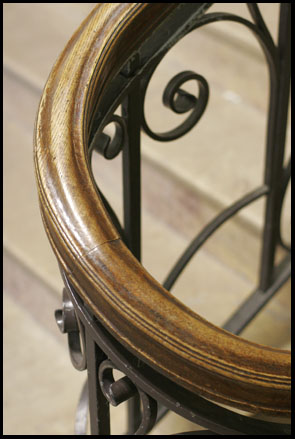Difference between revisions of "Count the Alphabet"
| (One intermediate revision by the same user not shown) | |||
| Line 3: | Line 3: | ||
|Problem=Loop through the alphabet and count how many consonants and vowels there are. Print a statement with the counts. | |Problem=Loop through the alphabet and count how many consonants and vowels there are. Print a statement with the counts. | ||
Your ouput should look something like this: | Your ouput should look something like this: | ||
| − | + | {{CodeBlock | |
| + | |Code= | ||
There are 5 vowels in the English alphabet. | There are 5 vowels in the English alphabet. | ||
There are 21 consonants in the English alphabet. | There are 21 consonants in the English alphabet. | ||
| − | + | }} | |
''Hint:'' A [[Glossary#char|char]] acts much the same way as an [[Glossary#Integer|int]] does. You can perform arithmetic with char just like you can with an int. | ''Hint:'' A [[Glossary#char|char]] acts much the same way as an [[Glossary#Integer|int]] does. You can perform arithmetic with char just like you can with an int. | ||
|SideSectionTitle=While and For Loops | |SideSectionTitle=While and For Loops | ||
| Line 16: | Line 17: | ||
''letter'' is the starting point for the counting in the alphabet. ''vowels'' and ''consonants'' are the counters. | ''letter'' is the starting point for the counting in the alphabet. ''vowels'' and ''consonants'' are the counters. | ||
| − | + | {{CodeBlock | |
| + | |Code= | ||
final int NUMLETTERS = 26; | final int NUMLETTERS = 26; | ||
char letter = 'a'; | char letter = 'a'; | ||
int vowels = 0; | int vowels = 0; | ||
int consonants = 0; | int consonants = 0; | ||
| − | + | }} | |
Starting at 0 ('a'), loop through the alphabet until you've looped 26 times (the number of letters in the alphabet, ''NUMLETTERS''). If any vowels are found, increase the vowel count. Move to the next letter by increasing the letter count. | Starting at 0 ('a'), loop through the alphabet until you've looped 26 times (the number of letters in the alphabet, ''NUMLETTERS''). If any vowels are found, increase the vowel count. Move to the next letter by increasing the letter count. | ||
| − | + | {{CodeBlock | |
| + | |Code= | ||
for(int i = 0; i < NUMLETTERS; i++) | for(int i = 0; i < NUMLETTERS; i++) | ||
{ | { | ||
| − | if(letter=='a' | + | if(letter=='a' {{!}}{{!}} letter=='e' {{!}}{{!}} letter=='i' {{!}}{{!}} letter=='o' |
| − | + | {{!}}{{!}} letter=='u') | |
| − | + | }} | |
If the char is not a vowel, then increase the consonant count and move to the next letter. | If the char is not a vowel, then increase the consonant count and move to the next letter. | ||
| − | + | {{CodeBlock | |
| + | |Code= | ||
else | else | ||
{ | { | ||
| Line 39: | Line 43: | ||
letter++; | letter++; | ||
} | } | ||
| − | + | }} | |
Print your count statements. | Print your count statements. | ||
| − | + | {{CodeBlock | |
| + | |Code= | ||
System.out.println("There are " + vowels + " vowels in the English alphabet."); | System.out.println("There are " + vowels + " vowels in the English alphabet."); | ||
System.out.println("There are " + consonants + " consonants in the English alphabet."); | System.out.println("There are " + consonants + " consonants in the English alphabet."); | ||
| − | + | }} | |
Latest revision as of 03:16, 6 December 2011
Back to the Program-A-Day homepage
ProblemLoop through the alphabet and count how many consonants and vowels there are. Print a statement with the counts. Your ouput should look something like this: There are 5 vowels in the English alphabet. There are 21 consonants in the English alphabet. Hint: A char acts much the same way as an int does. You can perform arithmetic with char just like you can with an int. |
While and For Loops | |
|---|---|---|
SolutionThe solution to this problem is similar to the "Print the Alphabet" problem in this chapter. In order to solve this problem, we use counters for the vowels and consonants and check the character after each iteration with an if-else statement. Here, we say that if any vowels are found, increase the vowel count by one. Otherwise, increase the consonant count. letter is the starting point for the counting in the alphabet. vowels and consonants are the counters. final int NUMLETTERS = 26;
char letter = 'a';
int vowels = 0;
int consonants = 0;
for(int i = 0; i < NUMLETTERS; i++)
{
if(letter=='a' || letter=='e' || letter=='i' || letter=='o'
|| letter=='u')
If the char is not a vowel, then increase the consonant count and move to the next letter. else
{
consonants++;
letter++;
}
Print your count statements. System.out.println("There are " + vowels + " vowels in the English alphabet.");
System.out.println("There are " + consonants + " consonants in the English alphabet.");
| ||
Code | ||
